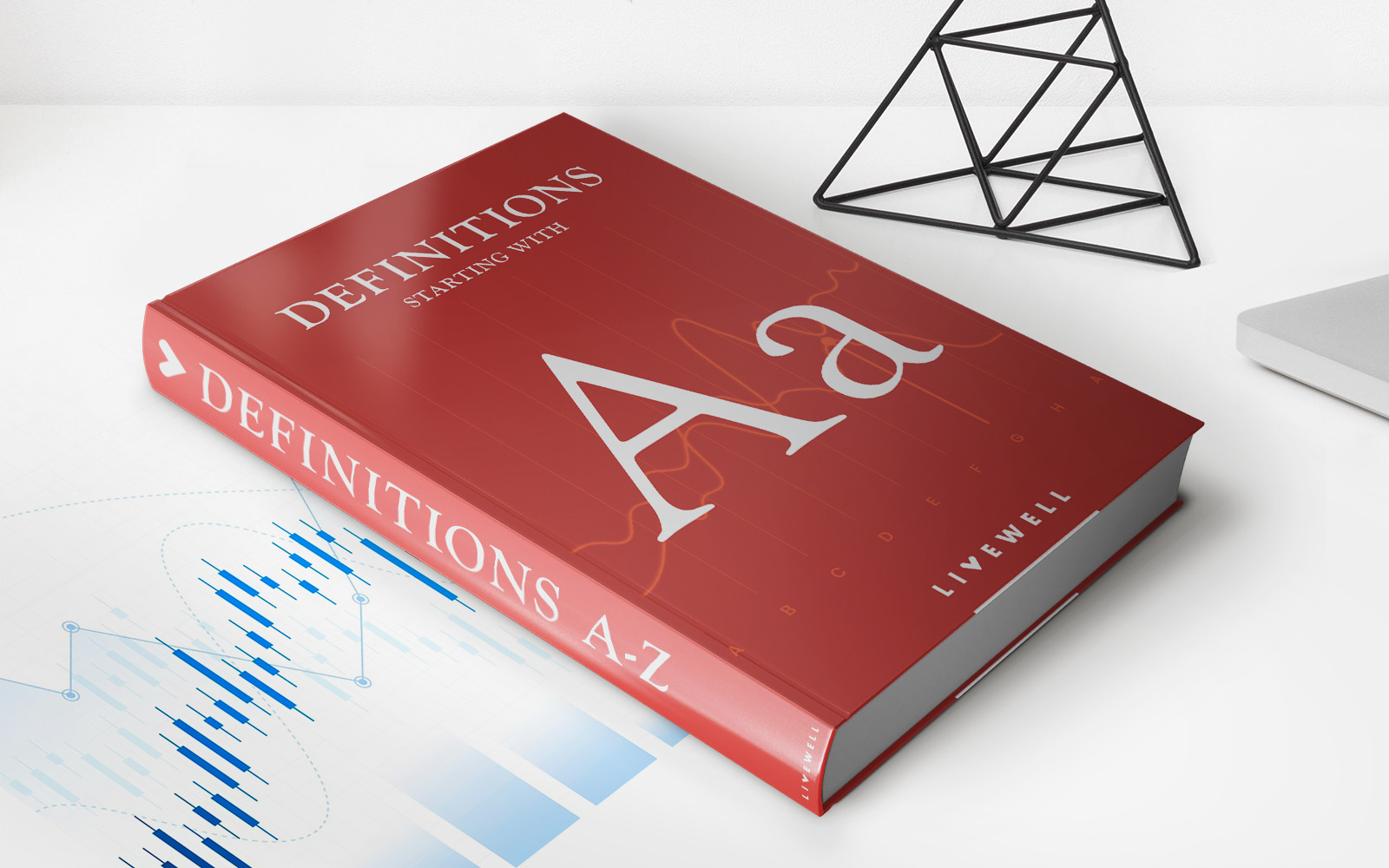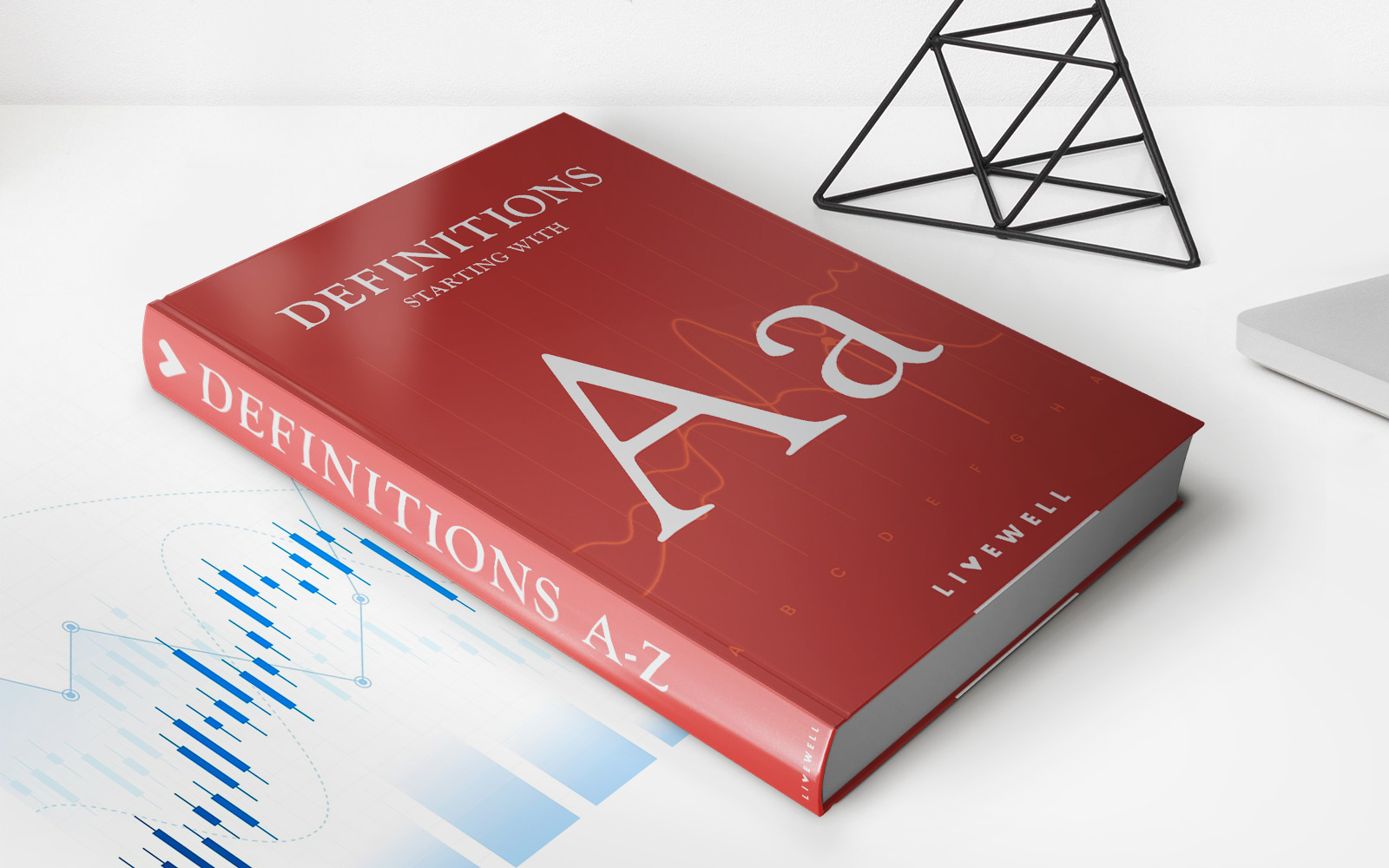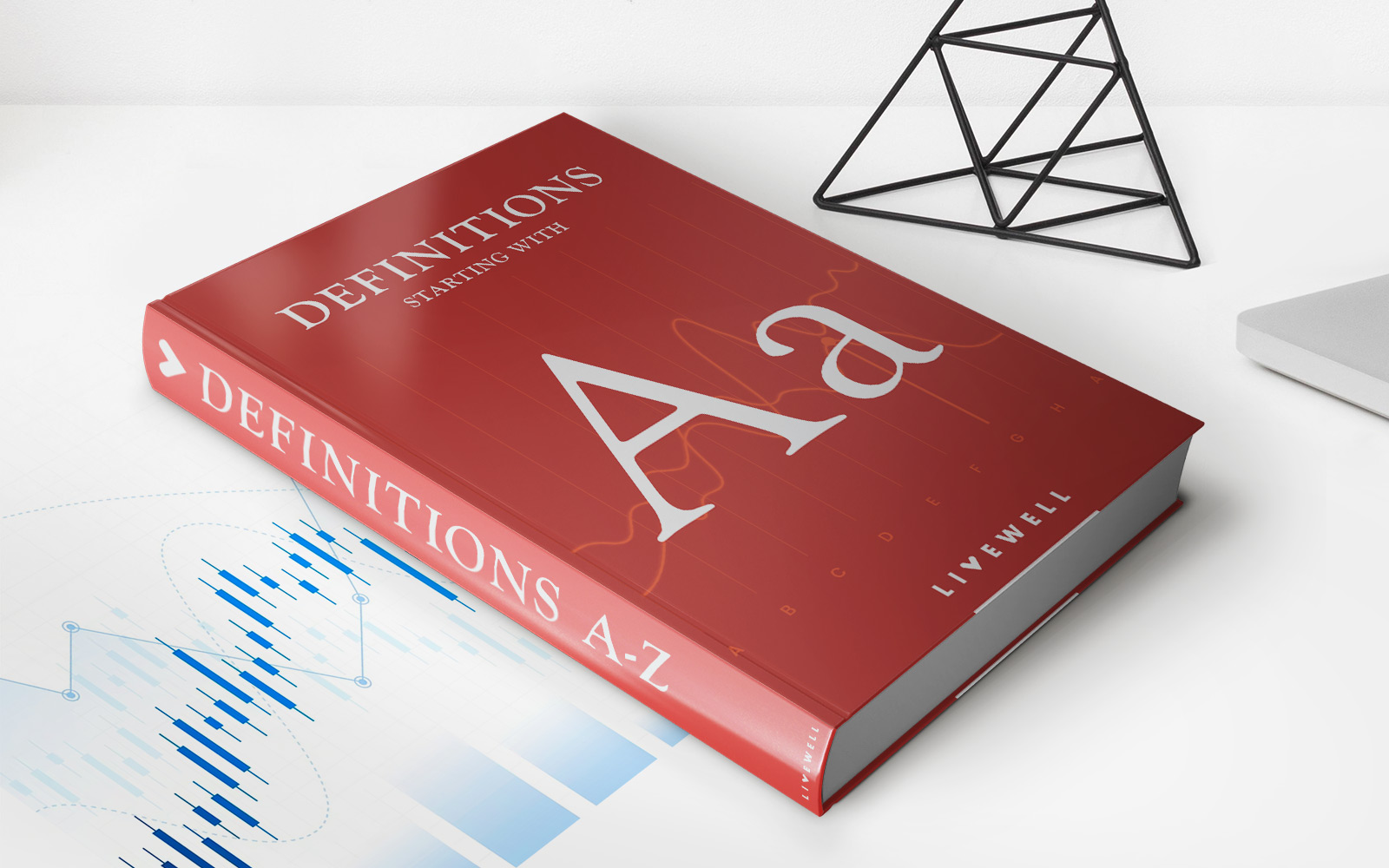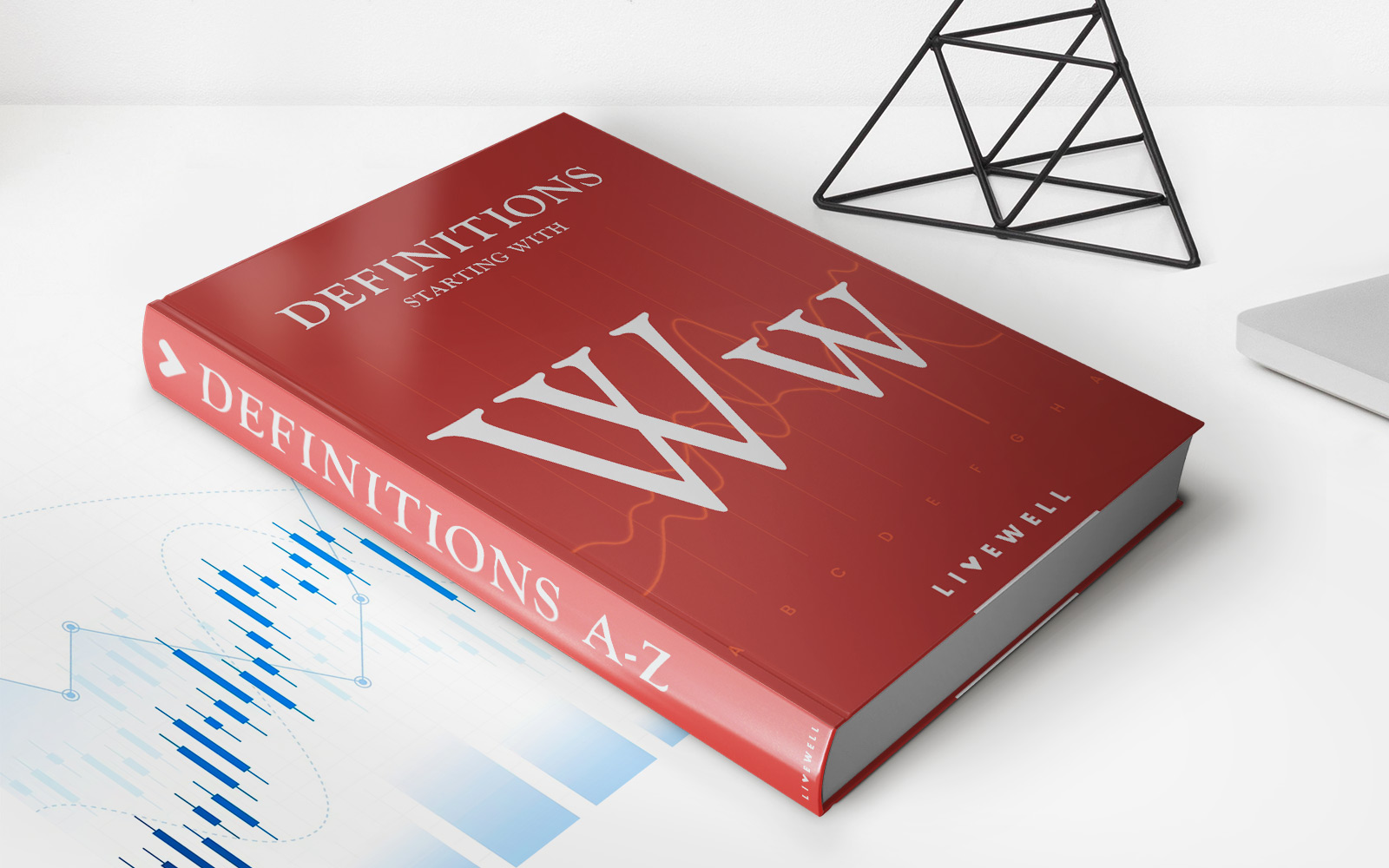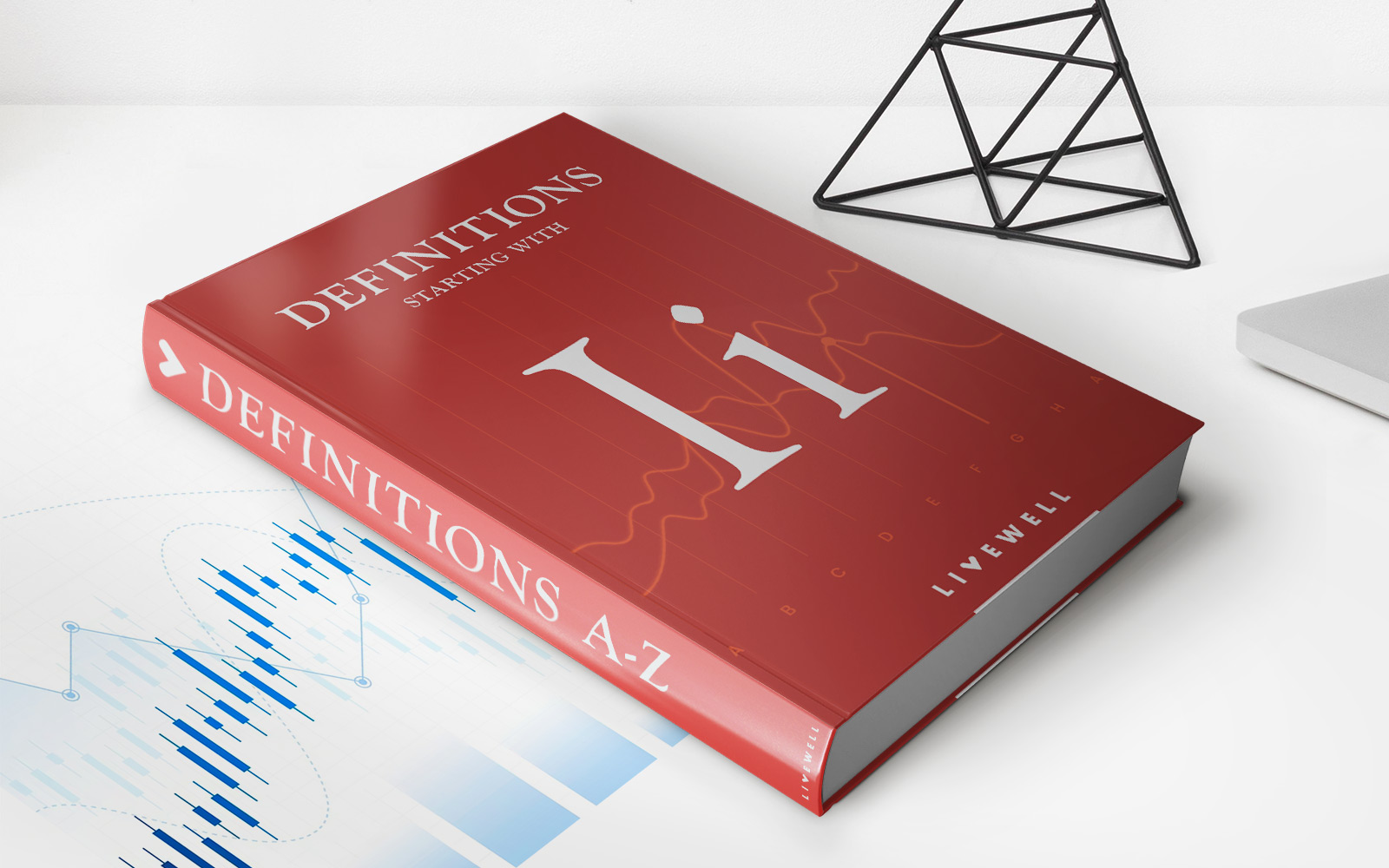

Finance
What Is An Insurance Appraisal?
Published: November 18, 2023
Learn about insurance appraisals in finance and how they can benefit you. Understand the importance of appraisals in determining the value of your insurance coverage.
(Many of the links in this article redirect to a specific reviewed product. Your purchase of these products through affiliate links helps to generate commission for LiveWell, at no extra cost. Learn more)
Table of Contents
- Introduction
- Definition of an Insurance Appraisal
- Purpose of an Insurance Appraisal
- Process of an Insurance Appraisal
- Roles and Responsibilities of Appraisers
- Factors Considered in an Insurance Appraisal
- Benefits of an Insurance Appraisal
- Differences Between an Insurance Appraisal and an Insurance Adjuster
- Conclusion
Introduction
When it comes to insurance claims, determining the value of a property or item can be a complex and contentious process. This is where an insurance appraisal comes into play. An insurance appraisal is a formal assessment conducted by a qualified appraiser to determine the value of an insured property or item. It is an essential part of the insurance claim process, ensuring that both the policyholder and the insurance company have a fair and accurate understanding of the value of the property or item.
Insurance appraisals are commonly conducted for various types of properties, including homes, vehicles, jewelry, artwork, and other valuable assets. The appraisal process involves a thorough examination of the property or item, taking into consideration various factors such as age, condition, rarity, market demand, and comparable sales.
The purpose of an insurance appraisal is to establish the replacement cost or market value of the property or item in the event of loss, damage, or theft. This information allows the insurance company to determine the appropriate coverage amount, premiums, and claim settlements. Additionally, an insurance appraisal provides a means for the policyholder to verify the value of their insured property and protects them from potential underinsurance.
The process of an insurance appraisal typically begins with the policyholder contacting their insurance company to initiate a claim or request an appraisal. The insurance company will then assign a qualified appraiser who specializes in the particular type of property or item being appraised. The appraiser will schedule an appointment to physically inspect the property or item and collect relevant information, such as documentation, receipts, and photographs.
During the appraisal, the appraiser will carefully assess the property or item, taking into account its condition, age, quality, and any unique characteristics. They may also consult databases, industry references, and market trends to determine an accurate valuation. The appraiser will then prepare a detailed appraisal report, including their findings, methodology, and the final value.
Both the policyholder and the insurance company will receive a copy of the appraisal report. If there is a disagreement between the two parties regarding the appraisal value, they may opt for a third-party arbitration process or seek additional expert opinions to resolve the dispute.
Overall, an insurance appraisal is a crucial step in the insurance claim process, ensuring that both the policyholder and the insurance company have a fair and accurate understanding of the value of the insured property or item. It provides peace of mind to the policyholder, knowing that their assets are adequately protected, and it allows the insurance company to make informed decisions regarding coverage and claim settlements.
Definition of an Insurance Appraisal
An insurance appraisal is a formal process in which a qualified appraiser assesses the value of an insured property or item for the purpose of determining appropriate coverage, premiums, and claim settlements. It is a critical component of the insurance claim process, ensuring that both the policyholder and the insurance company have an accurate understanding of the value of the property or item.
Insurance appraisals are conducted on various types of properties and items, including homes, vehicles, artwork, collectibles, jewelry, and other valuable assets. The primary objective of an insurance appraisal is to establish the replacement cost or market value of the property or item in the event of loss, damage, or theft.
Appraisals are typically conducted by professional appraisers who have extensive knowledge and expertise in valuing different types of properties and items. These appraisers are often certified or accredited by recognized organizations and adhere to strict industry standards and ethical guidelines.
During an insurance appraisal, the appraiser will conduct a thorough examination of the property or item, considering various factors that may impact its value. These factors may include the age, condition, rarity, historical significance, market demand, and comparable sales of similar properties or items. The appraiser may also consult industry databases, reference materials, and market trends to gather relevant information for an accurate valuation.
Once the appraisal is complete, the appraiser will prepare a detailed appraisal report that outlines their findings, methodology, and the final value of the property or item. This report serves as an official document that supports the insurance claim and provides a basis for determining appropriate coverage and claim settlements.
It’s important to note that an insurance appraisal is distinct from an assessment conducted by an insurance adjuster. An adjuster typically assesses the extent of damage or loss in an insurance claim and determines the amount of compensation to be provided. On the other hand, an appraiser focuses on determining the value of the property or item before any loss or damage occurs.
Overall, an insurance appraisal is a critical process that ensures fair and accurate valuation of insured properties and items. It provides policyholders with a sense of security, knowing that their assets are adequately protected and valued. It also allows insurance companies to make informed decisions regarding coverage and claim settlements based on reliable and objective appraisals.
Purpose of an Insurance Appraisal
The purpose of an insurance appraisal is to establish the value of an insured property or item for the purpose of determining appropriate coverage, premiums, and claim settlements. It plays a crucial role in the insurance claim process by ensuring that both the policyholder and the insurance company have a fair and accurate understanding of the value of the property or item.
One of the main purposes of an insurance appraisal is to determine the replacement cost of a property or item in the event of loss, damage, or theft. The appraisal provides an estimate of the amount needed to replace or repair the property to its pre-loss condition. This information is used by the insurance company to calculate the appropriate coverage amount and determine the premiums to be charged to the policyholder.
Additionally, an insurance appraisal helps to protect the policyholder from potential underinsurance. Without an accurate assessment of the value of their insured property or item, policyholders may unknowingly purchase insufficient coverage, leaving them financially vulnerable in the event of a claim. The appraisal ensures that the policyholder has adequate coverage in place to fully protect their assets.
Another purpose of an insurance appraisal is to provide an objective valuation of valuable assets, such as artwork, jewelry, or collectibles. These items may have unique characteristics or fluctuating market values, making it challenging for the policyholder or insurance company to determine their true worth. An appraisal conducted by a qualified appraiser helps to establish an accurate and unbiased market value for these assets.
In the event of a claim, the appraisal report serves as a crucial document that supports the policyholder’s valuation and claim settlement negotiations with the insurance company. It provides an objective assessment of the property or item’s value based on industry standards and accepted appraisal methods. This helps to ensure a fair and equitable resolution of the claim.
Furthermore, an insurance appraisal can also be useful for estate planning purposes. It helps to establish the value of assets that may be included in an estate, ensuring that they are accurately accounted for and distributed according to the policyholder’s wishes. An appraisal can also assist in determining the appropriate amount of insurance coverage needed to protect these assets.
Overall, the purpose of an insurance appraisal is to provide an accurate, objective, and independent assessment of the value of insured properties or items. It benefits both the policyholder and the insurance company by ensuring adequate coverage, fair claim settlements, and protection against underinsurance. By obtaining an appraisal, policyholders can have peace of mind knowing that their assets are valued correctly, and insurance companies can make informed decisions regarding coverage and claim settlements.
Process of an Insurance Appraisal
The process of an insurance appraisal involves several key steps to determine the value of an insured property or item accurately. This appraisal process ensures that both the policyholder and the insurance company have a fair and accurate understanding of the value, leading to appropriate coverage, premiums, and claim settlements.
1. Initiation: The appraisal process typically begins when the policyholder initiates a claim or requests an appraisal from their insurance company. The policyholder will provide relevant information, such as the type of property or item to be appraised, any supporting documentation, and details about the insurance coverage.
2. Appraiser Assignment: The insurance company will assign a qualified appraiser to conduct the appraisal. The appraiser is usually a professional with expertise in valuing the specific type of property or item being appraised. The appraiser’s selection is crucial to ensure an accurate and unbiased valuation.
3. Property or Item Inspection: The appraiser will schedule an appointment to physically inspect the property or item. During the inspection, the appraiser will carefully examine various aspects, including the condition, age, quality, and any unique characteristics that may affect its value. The appraiser may also take photographs, measurements, and gather additional documentation for reference.
4. Research and Analysis: After the property or item inspection, the appraiser will conduct research and analysis. This may include reviewing relevant market data, consulting industry databases, studying recent sales of comparable properties or items, and considering any other factors that might impact the value. The appraiser will use their expertise and professional judgment to determine an accurate and reliable valuation.
5. Appraisal Report Preparation: Once the appraisal analysis is complete, the appraiser will prepare a detailed appraisal report. The report will include information about the property or item, the appraiser’s findings and methodology, and the final valuation. The appraisal report serves as an official document that provides evidence of the property’s or item’s value.
6. Delivery of Appraisal Report: The appraiser will provide copies of the appraisal report to both the policyholder and the insurance company. These reports are essential for supporting the insurance claim and establishing the value of the property or item for coverage and claim settlement purposes.
7. Dispute Resolution: In the event of a disagreement between the policyholder and the insurance company regarding the appraisal value, there are options for dispute resolution. The parties may opt for third-party mediation or arbitration to reach a settlement. They may also seek additional expert opinions or appraisals to resolve the dispute.
Throughout the process, it is essential for both the policyholder and the insurance company to maintain open communication and provide any necessary documentation or information requested by the appraiser. This will ensure a smooth and efficient appraisal process and help in reaching an accurate valuation of the property or item.
Overall, the process of an insurance appraisal involves careful inspection, research, and analysis by a qualified appraiser to determine the accurate value of the insured property or item. This process ensures that both the policyholder and the insurance company have a fair assessment for appropriate coverage, premiums, and claim settlements.
Roles and Responsibilities of Appraisers
Appraisers play a crucial role in the insurance appraisal process, responsible for assessing the value of insured properties or items accurately. Their expertise and knowledge are essential in ensuring a fair and objective valuation that benefits both the policyholder and the insurance company. Here are the key roles and responsibilities of appraisers:
1. Property or Item Evaluation: Appraisers are responsible for thoroughly evaluating the property or item being appraised. They examine various factors, such as its age, condition, quality, rarity, and any unique characteristics that may affect its value. They may also consider market demand and recent sales of comparable properties or items to make an informed assessment.
2. Research and Data Analysis: Appraisers conduct extensive research and analysis to gather relevant data and market information. They consult industry databases, reference materials, and market trends to ensure their valuation is based on accurate and reliable information. This research enables them to provide an objective and well-supported appraisal report.
3. Compliance with Standards: Appraisers adhere to industry standards and guidelines while conducting appraisals. They follow established valuation methodologies and ethical guidelines set by professional appraisal organizations. This ensures the appraisal process is conducted in a consistent, transparent, and reliable manner.
4. Appraisal Report Preparation: Appraisers are responsible for preparing a detailed appraisal report that includes their findings, methodology, and the final valuation of the property or item. The report serves as an official document that supports the insurance claim and provides evidence of the property’s or item’s value.
5. Communication and Collaboration: Appraisers communicate and collaborate with various stakeholders, including the policyholder, the insurance company, and potentially other experts involved in the appraisal process. They effectively communicate their findings, methodology, and valuation to ensure all parties have a clear understanding of the appraisal results.
6. Ongoing Professional Development: Appraisers dedicate themselves to ongoing professional development to stay updated with industry trends, regulations, and valuation techniques. They may continue their education, pursue certifications or accreditations, and engage in professional forums and conferences to enhance their knowledge and expertise.
7. Impartiality and Objectivity: Appraisers have a responsibility to remain impartial and objective throughout the appraisal process. They provide an unbiased evaluation, free from any conflicts of interest or external influences that may compromise the integrity of the appraisal. This ensures that the valuation is fair and accurate.
8. Conflict Resolution: Appraisers may also be involved in conflict resolution between the policyholder and the insurance company regarding the appraisal value. They may provide expertise and guidance in resolving disputes, offering additional evidence or expert opinions to reach a fair settlement.
Overall, appraisers play a vital role in the insurance appraisal process. They possess the necessary expertise, knowledge, and professionalism to assess the value of insured properties or items accurately. By fulfilling their roles and responsibilities, appraisers ensure a fair and objective valuation that benefits both the policyholder and the insurance company.
Factors Considered in an Insurance Appraisal
During an insurance appraisal, various factors are taken into consideration to determine the value of an insured property or item accurately. These factors provide important insights into the characteristics, condition, and market value of the property or item being appraised. Here are some of the key factors that appraisers consider during the appraisal process:
1. Age: The age of the property or item is a crucial factor in determining its value. Older properties or items may have historical significance or rarity, which can contribute to their value. On the other hand, newer properties or items may have higher value due to their modern features or current market demand.
2. Condition: The condition of the property or item is another significant factor. Appraisers evaluate the overall state, quality, and functionality of the property or item. This includes examining any wear and tear, damage, or maintenance issues that might affect its value. Well-maintained properties or items generally have higher values.
3. Rarity and Uniqueness: Appraisers consider the rarity and uniqueness of the property or item. If the property or item is one-of-a-kind, has a limited production, or possesses special features or characteristics, its rarity can increase its value. Unique properties or items often have a higher market demand and command higher prices.
4. Historical Significance: Properties or items with historical significance can hold significant value. Appraisers consider the historical context and importance of the property or item, such as its association with a notable event, person, or era. Historical significance can greatly enhance the appraisal value.
5. Market Demand: The current market demand for the type of property or item being appraised is a crucial factor. Appraisers consider the supply and demand dynamics, trends, and market preferences. Higher demand for a specific property or item can lead to increased values.
6. Comparable Sales: Appraisers analyze recent sales of similar properties or items to determine their market value. They look for comparable sales in the same geographic area, with similar characteristics, age, condition, and features. These sales provide valuable benchmarks for appraisers to establish an accurate value.
7. Expertise and Research: Appraisers rely on their expertise, knowledge, and research skills to gather relevant information for the valuation. They consult industry databases, reference materials, market trends, and other sources to ensure the appraisal is based on accurate and reliable data.
8. Economic Factors: Appraisers consider economic factors such as inflation rates and economic conditions that may impact the value of the property or item. They take into account how these factors influence the supply and demand dynamics, as well as the overall market stability and fluctuations.
9. Functionality and Utility: The functionality and utility of the property or item are important considerations. Appraisers assess how well the property or item serves its intended purpose and whether there are any limitations or deficiencies that might affect its value.
10. Current Market Trends: Appraisers stay informed about current market trends. They analyze industry reports, market data, and economic indicators to evaluate how market trends may affect the value of the property or item being appraised.
By considering these various factors, appraisers can provide an objective and accurate valuation of the insured property or item. This ensures that both the policyholder and the insurance company have a fair understanding of its value for appropriate coverage, premiums, and claim settlements.
Benefits of an Insurance Appraisal
An insurance appraisal offers several important benefits for both policyholders and insurance companies. This formal assessment of the value of an insured property or item provides accurate and reliable information that contributes to fair and equitable insurance coverage, premiums, and claim settlements. Here are some of the key benefits of an insurance appraisal:
1. Accurate Valuation: One of the primary benefits of an insurance appraisal is obtaining a precise and reliable valuation of the insured property or item. The appraiser, with their expertise and knowledge, thoroughly examines various factors and considerations to establish an accurate assessment of the value. This ensures that the policyholder has appropriate coverage in place and the insurance company can accurately adjust premiums based on the asset’s value.
2. Protection against Underinsurance: An insurance appraisal helps protect the policyholder from potential underinsurance. By conducting a comprehensive appraisal, the true value of the property or item is determined. This helps ensure that the policyholder has adequate coverage and that any claims settlements will accurately reflect the value of the insured asset.
3. Claim Settlements: Appraisals provide a solid foundation for resolving claim disputes. With an official appraisal report, both the policyholder and the insurance company have objective information about the value of the property or item. This helps facilitate fair and speedy claim settlements, reducing the likelihood of protracted negotiations or conflicts.
4. Transparency and Objectivity: An insurance appraisal brings transparency and objectivity to the insurance claim process. Appraisers follow industry standards and ethical guidelines in conducting their assessments, ensuring an unbiased and fair valuation. This promotes trust and confidence between the policyholder and the insurance company, as both parties can rely on the expertise and impartiality of the appraiser.
5. Avoiding Overpayment: An appraisal can also help prevent overpayment by ensuring that the policyholder only pays for the appropriate amount of coverage. By accurately valuing the property or item, the appraisal allows the insurance company to adjust premiums accordingly. This helps the policyholder avoid paying excess premiums for overestimated values.
6. Estate Planning: Insurance appraisals can be beneficial for estate planning purposes. They provide an accurate and objective assessment of the value of assets, allowing the policyholder to make informed decisions about their estate. Appraisals assist in determining the appropriate level of insurance coverage needed to protect these assets and can aid in the equitable division of assets among beneficiaries.
7. Documentation and Records: The appraisal report serves as an official document that provides evidence of the value of the insured property or item. It acts as a valuable record for both the policyholder and the insurance company, supporting future claims, adjusting coverage, and maintaining accurate records of the insured assets. This documentation helps streamline future insurance processes and ensures consistency in valuation.
8. Peace of Mind: Ultimately, an insurance appraisal provides peace of mind to the policyholder. They know that their assets are accurately valued, adequately covered, and will be fairly compensated in the event of a claim. Appraisals provide a sense of security and reassurance that their insurance policy aligns with the true value of their assets.
In summary, an insurance appraisal offers numerous benefits to policyholders and insurance companies alike. From accurate valuation and protection against underinsurance to facilitating fair claim settlements and providing peace of mind, appraisals play a vital role in ensuring transparency, fairness, and accuracy in the insurance industry.
Differences Between an Insurance Appraisal and an Insurance Adjuster
While both an insurance appraisal and an insurance adjuster are involved in the insurance claim process, they serve different roles and have distinct responsibilities. Understanding the differences between these two entities is important to grasp how they contribute to the overall insurance claim process. Here are the key differences between an insurance appraisal and an insurance adjuster:
1. Role and Purpose:
- An insurance appraiser is responsible for determining the value of an insured property or item. Their primary role is to provide an accurate appraisal of the asset, primarily focusing on establishing its value before any loss or damage occurs.
- An insurance adjuster, on the other hand, assesses the extent of loss or damage to the insured property or item. Their primary role is to investigate and evaluate the claim, determining the appropriate amount of compensation or settlement to be provided to the policyholder.
2. Timing:
- An insurance appraisal typically takes place before any loss or damage occurs to the insured property or item. Its purpose is to establish the value for insurance coverage and to ensure appropriate premiums and coverage amounts.
- An insurance adjuster becomes involved after a loss or damage incident has occurred. They assess the situation, investigate the claim, and determine the extent of loss or damage, including the costs associated with repairs, replacement, or compensation.
3. Expertise:
- An insurance appraiser is a qualified professional with specialized knowledge and expertise in valuing different types of properties or items. They have a deep understanding of the factors that impact value and use recognized methodologies to provide accurate and unbiased appraisals.
- An insurance adjuster is also a trained professional but focuses on investigating and evaluating insurance claims. They assess the impact of loss or damage, review policy coverage details, and negotiate settlements with the policyholder.
4. Valuation vs. Loss Assessment:
- An insurance appraiser determines the value of the insured property or item for insurance purposes. They consider various factors, such as age, condition, rarity, and market demand, to establish an accurate valuation.
- An insurance adjuster assesses the extent of loss or damage to the insured property or item. They investigate the cause of the loss, review policy terms and coverage, and determine the appropriate compensation or settlement amount.
5. Independence and Impartiality:
- An insurance appraiser is independent and impartial in their valuation. They provide an unbiased and objective assessment of the value of the insured property or item, free from any conflicts of interest.
- An insurance adjuster works on behalf of the insurance company and is responsible for assessing the claim and negotiating settlements. Their role includes representing the insurer’s interests while ensuring a fair and equitable outcome for the policyholder.
6. Documentation and Reporting:
- An insurance appraiser prepares a detailed appraisal report that outlines their findings, methodology, and the final value of the property or item. This report serves as a formal document that supports the insurance claim and provides evidence of the asset’s value.
- An insurance adjuster prepares a comprehensive claims report that documents the details of the loss or damage, the investigation process, and the recommended compensation or settlement to be provided to the policyholder. This report is used to support the claim settlement and ensure a fair resolution.
By understanding the distinctions between an insurance appraisal and an insurance adjuster, policyholders can navigate the insurance claim process effectively. While appraisers focus on establishing the value of insured assets, adjusters specialize in evaluating claims and negotiating settlements, ultimately ensuring a fair outcome for all parties involved.
Conclusion
Insurance appraisals play a critical role in the insurance claim process, providing accurate and reliable valuations of insured properties or items. The appraisal process, conducted by qualified appraisers, ensures that both the policyholder and the insurance company have a fair and accurate understanding of the value of the asset. By establishing the replacement cost or market value of the property or item, insurance appraisals facilitate appropriate coverage, premiums, and claim settlements.
An insurance appraisal offers several benefits. It protects the policyholder from potential underinsurance, ensuring that their assets are adequately covered. The appraisal also promotes transparency and objectivity in the insurance claim process, as appraisers adhere to industry standards and ethical guidelines. The valuation provided by an appraiser serves as a valuable document, supporting future claims, adjusting coverage, and maintaining accurate records of insured assets.
Throughout the appraisal process, appraisers consider various factors, including age, condition, rarity, historical significance, market demand, and comparable sales. Their expertise and research skills enable them to provide accurate and unbiased valuations. The appraisal report they produce serves as a reliable basis for claim settlements and can help in resolving disputes if they arise.
It’s important to distinguish between insurance appraisals and insurance adjusters. While appraisers focus on determining the value of the insured asset, adjusters assess the extent of the loss or damage and negotiate settlements. Understanding the roles and responsibilities of each entity helps in effectively navigating the insurance claim process.
In conclusion, insurance appraisals are vital for policyholders and insurance companies alike. They ensure accurate valuations, protect against underinsurance, facilitate fair claim settlements, and provide peace of mind to policyholders. By conducting thorough assessments and providing objective appraisals, qualified appraisers contribute to the transparency, equity, and reliability of the insurance industry.

